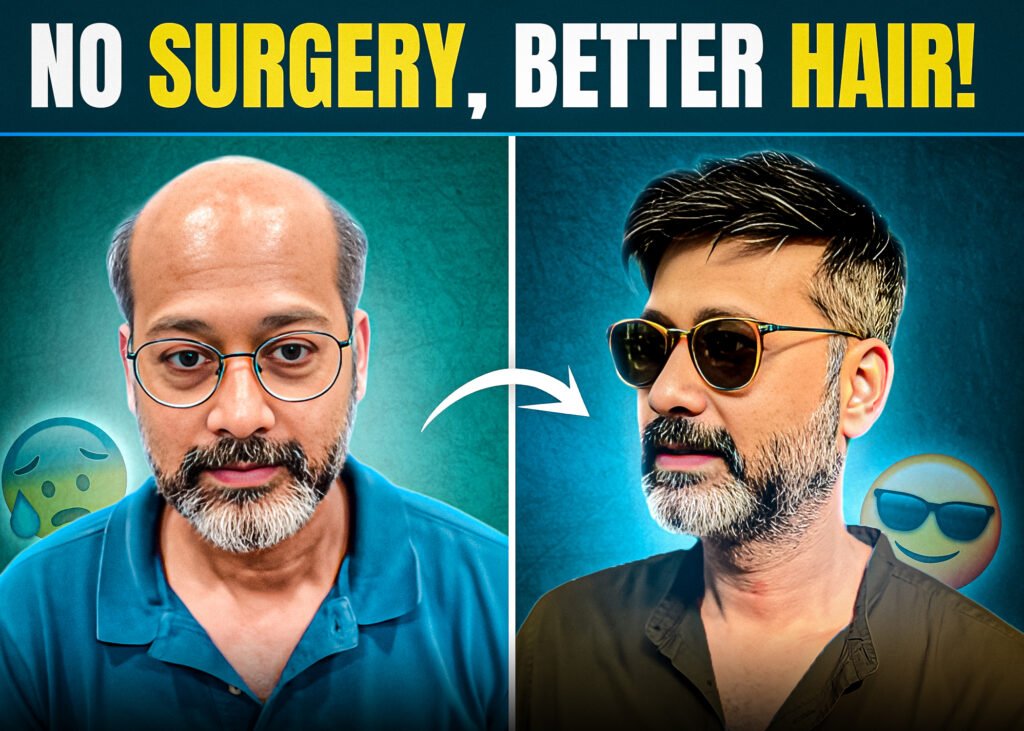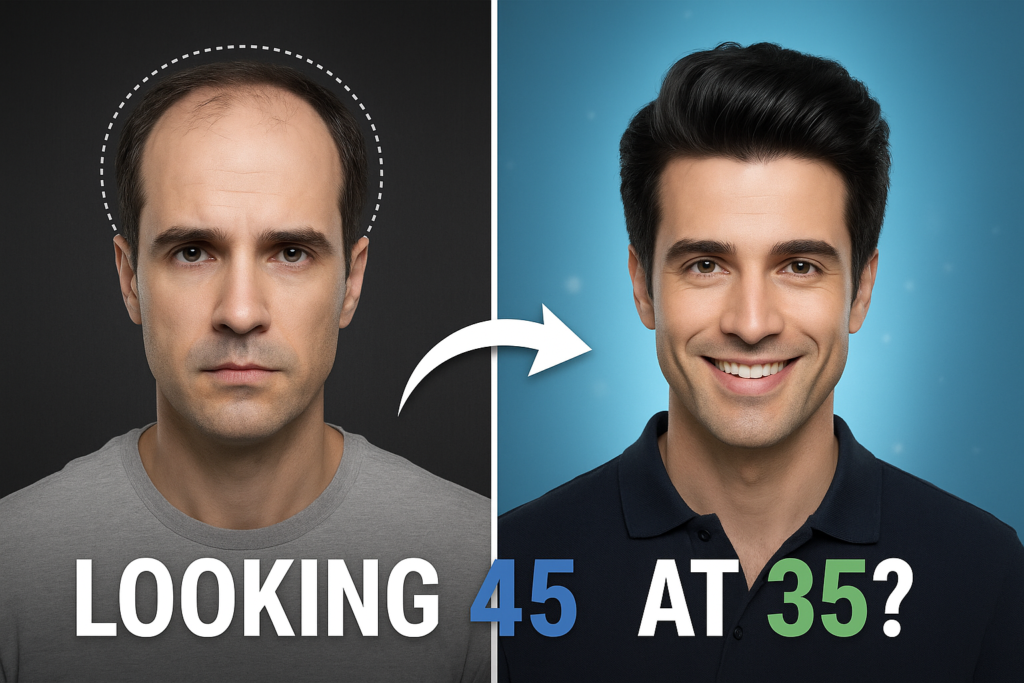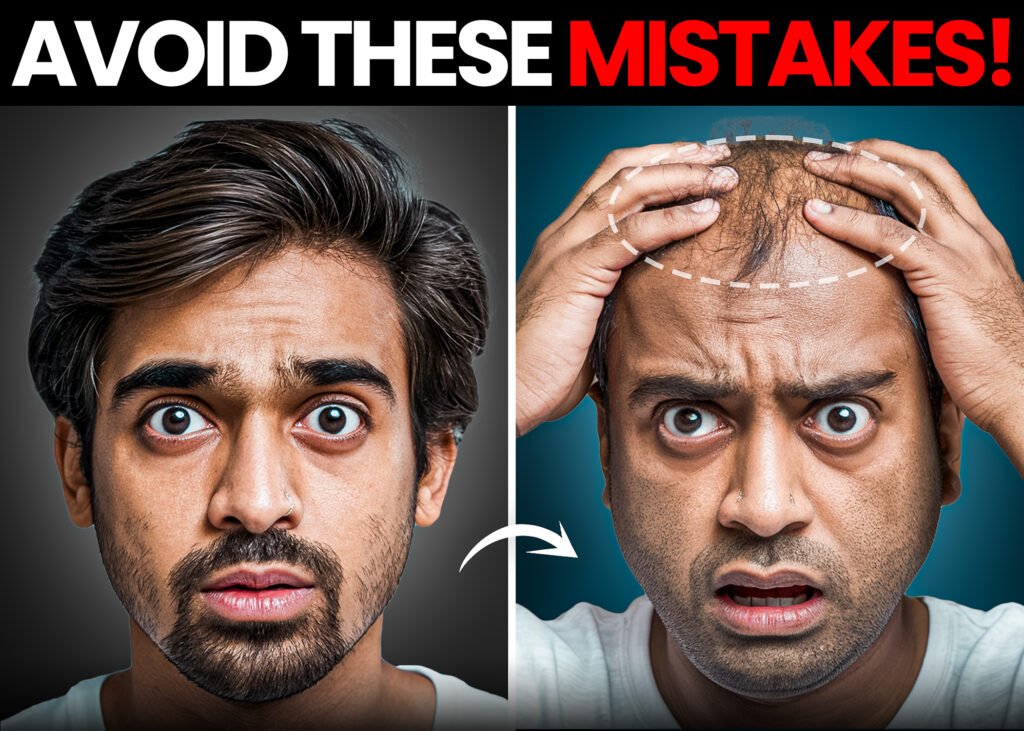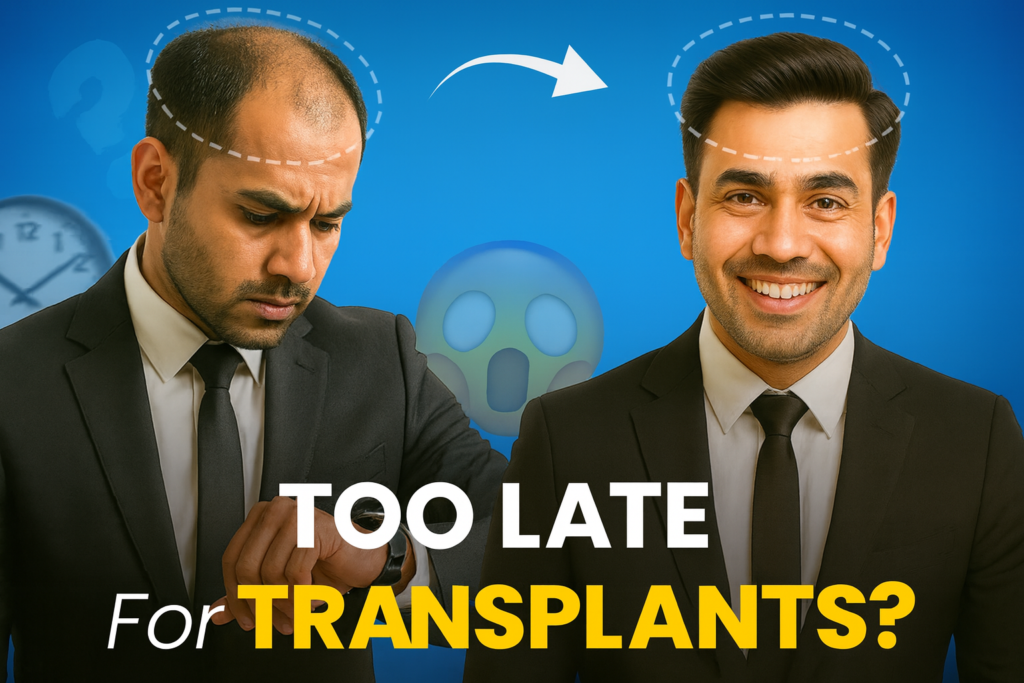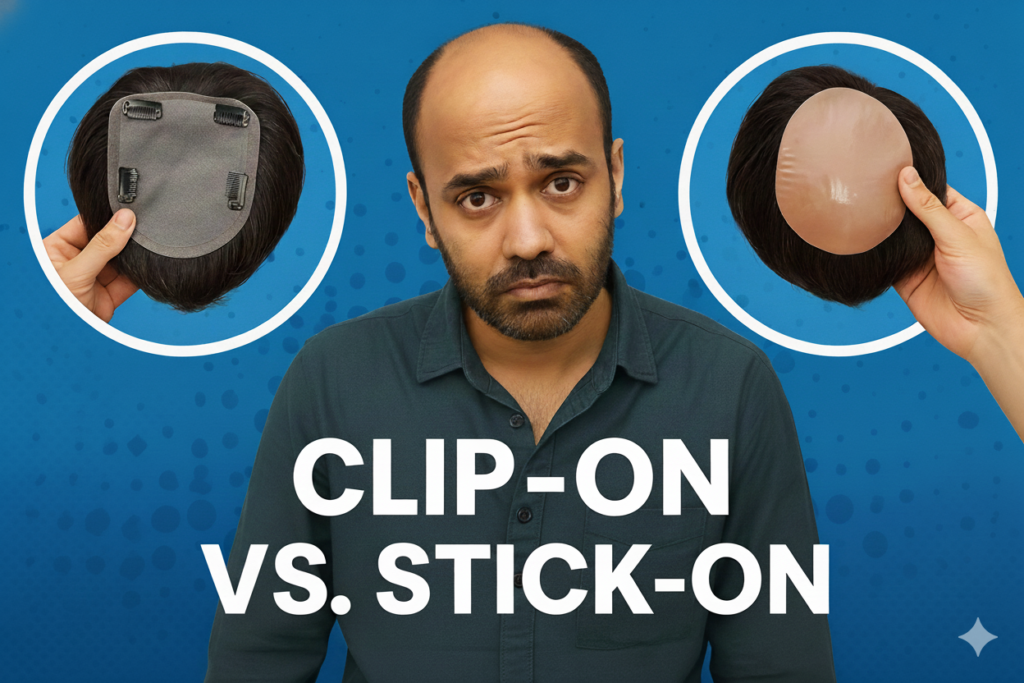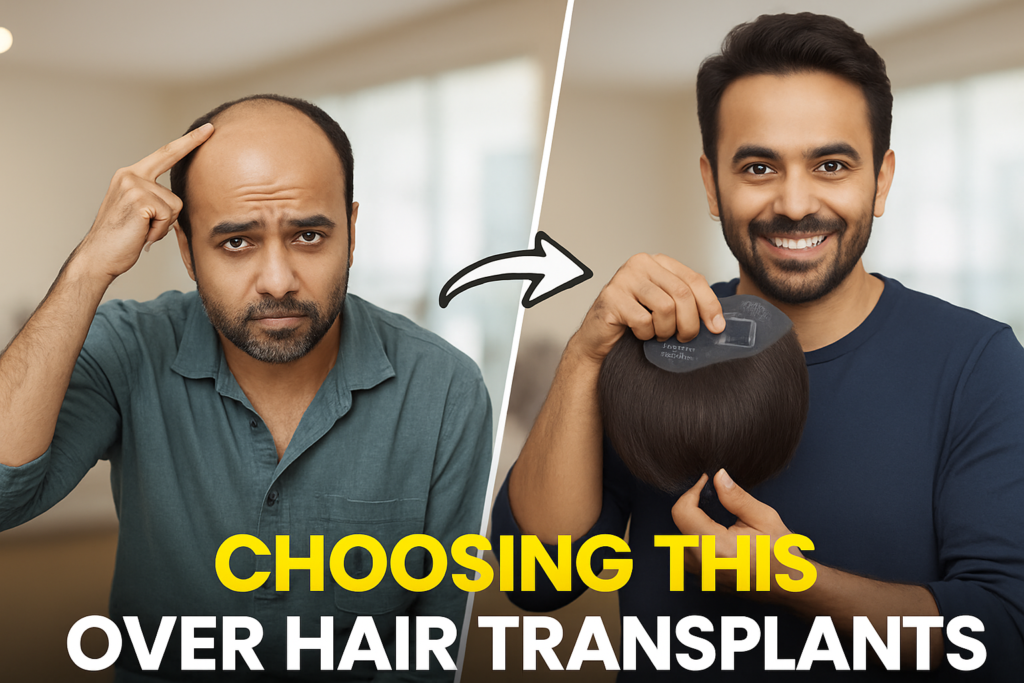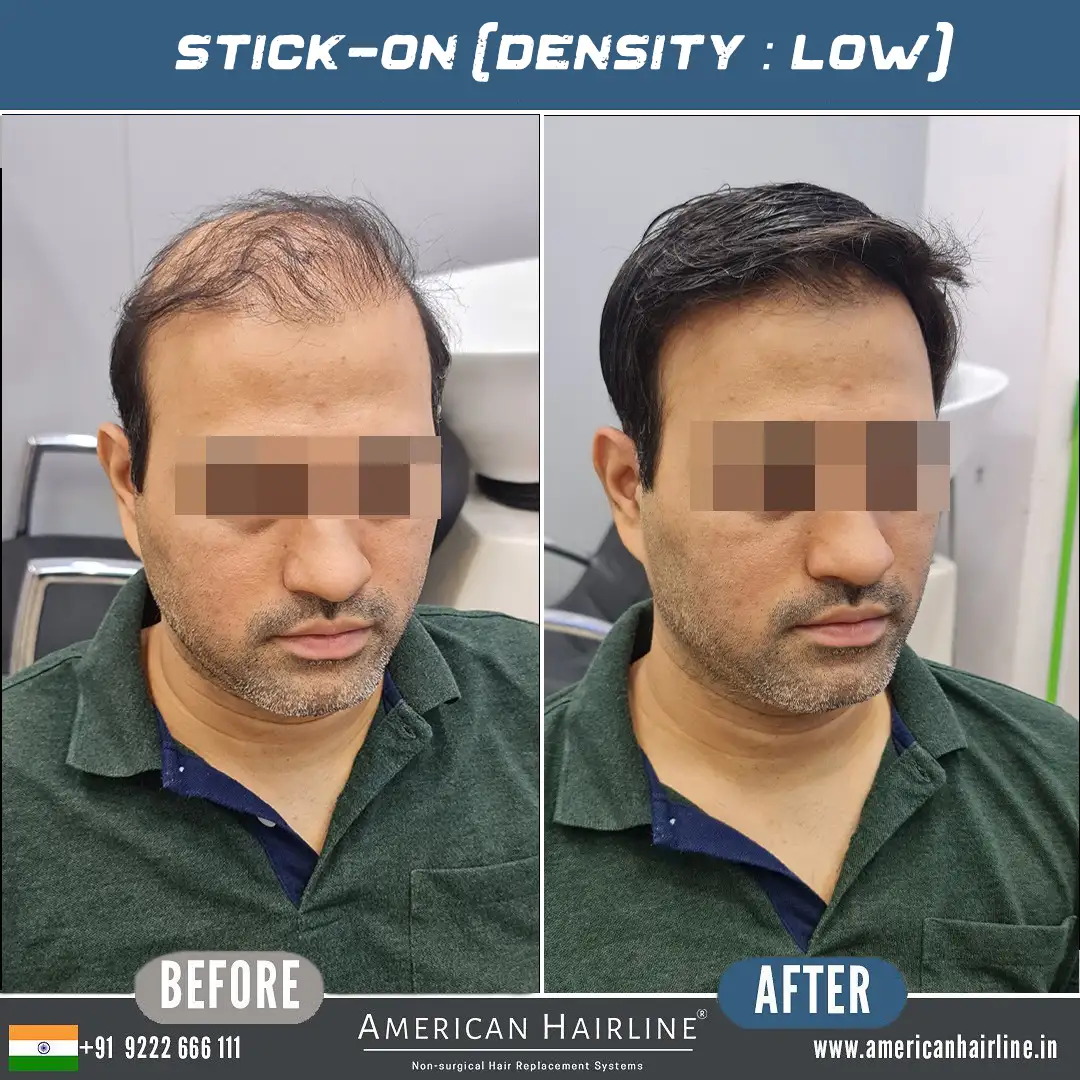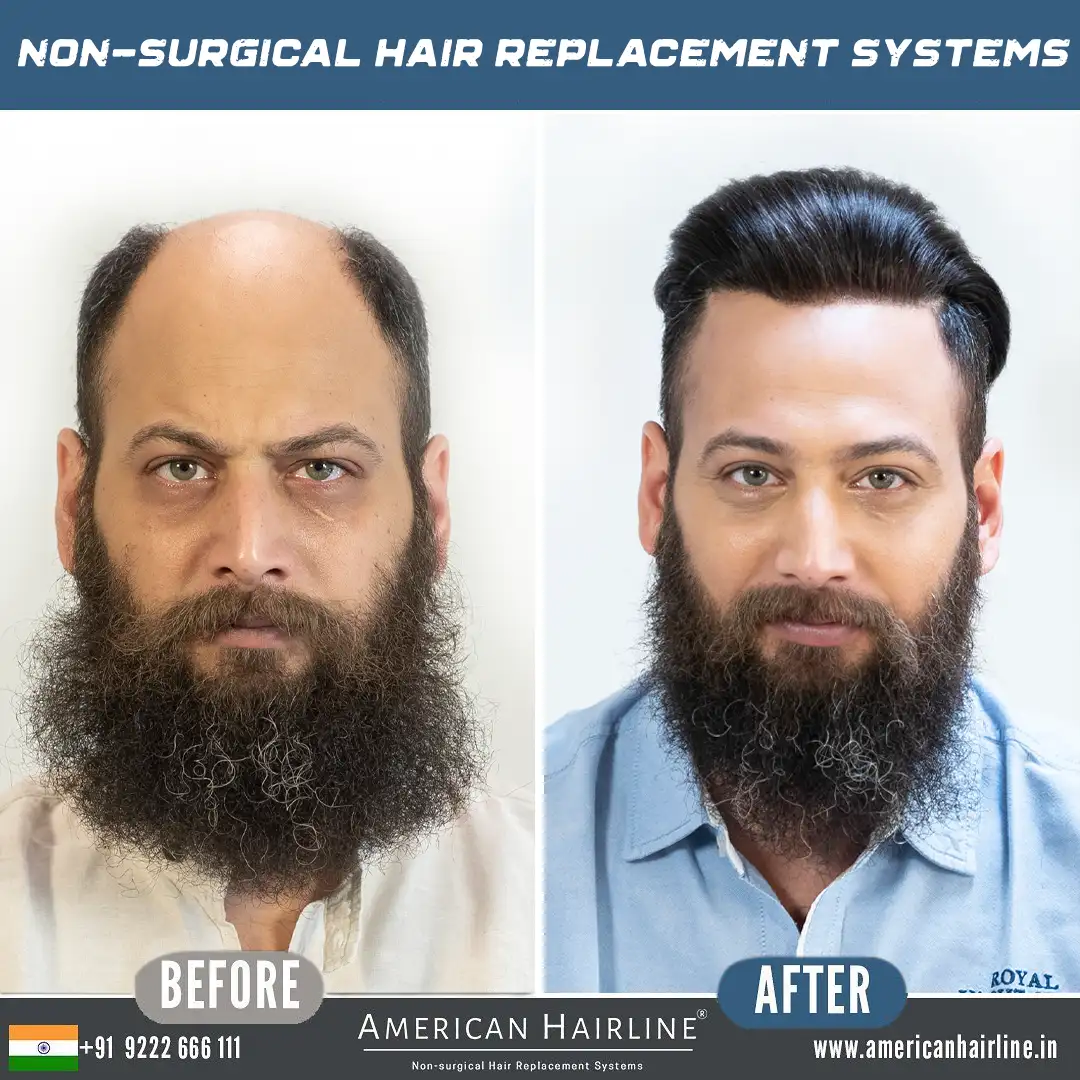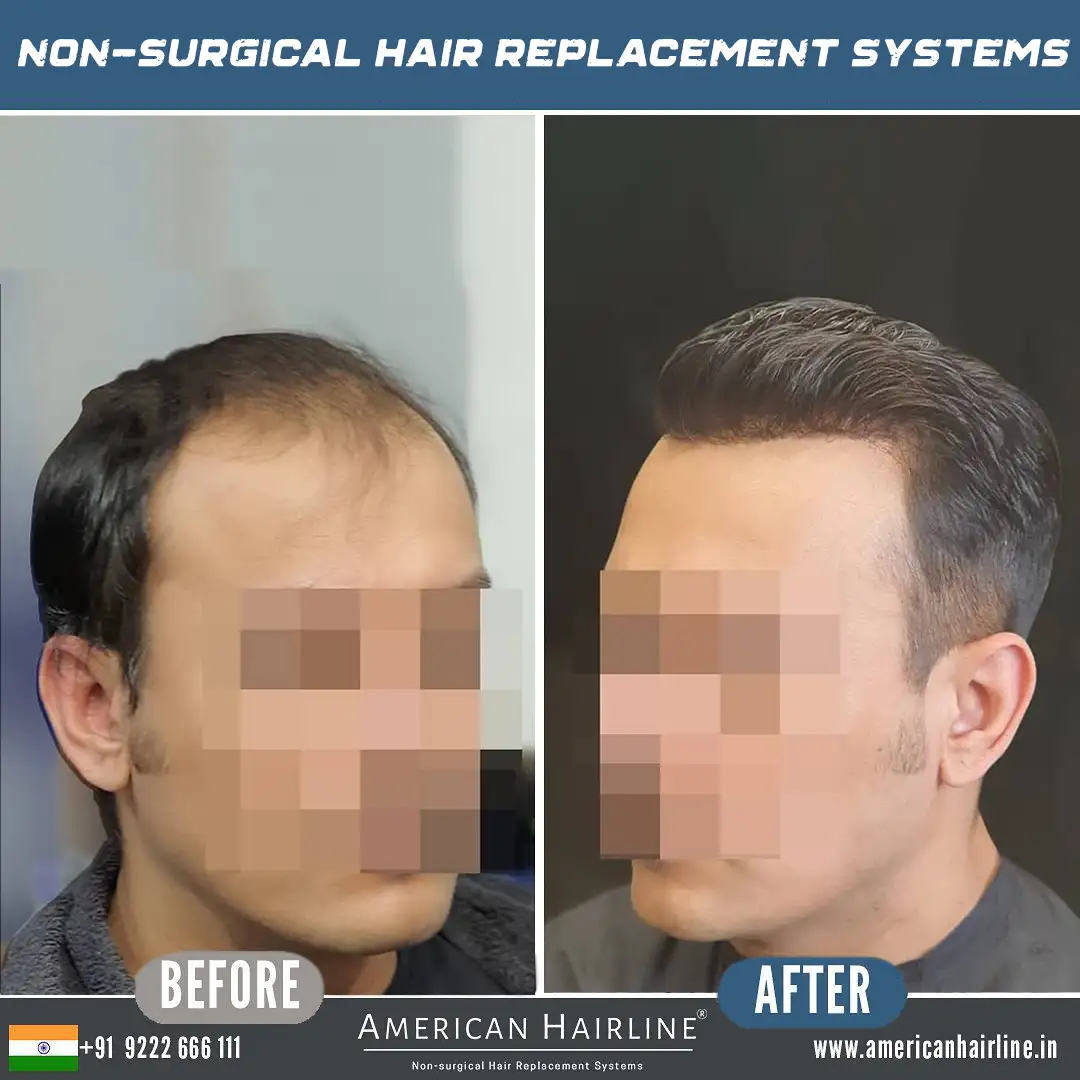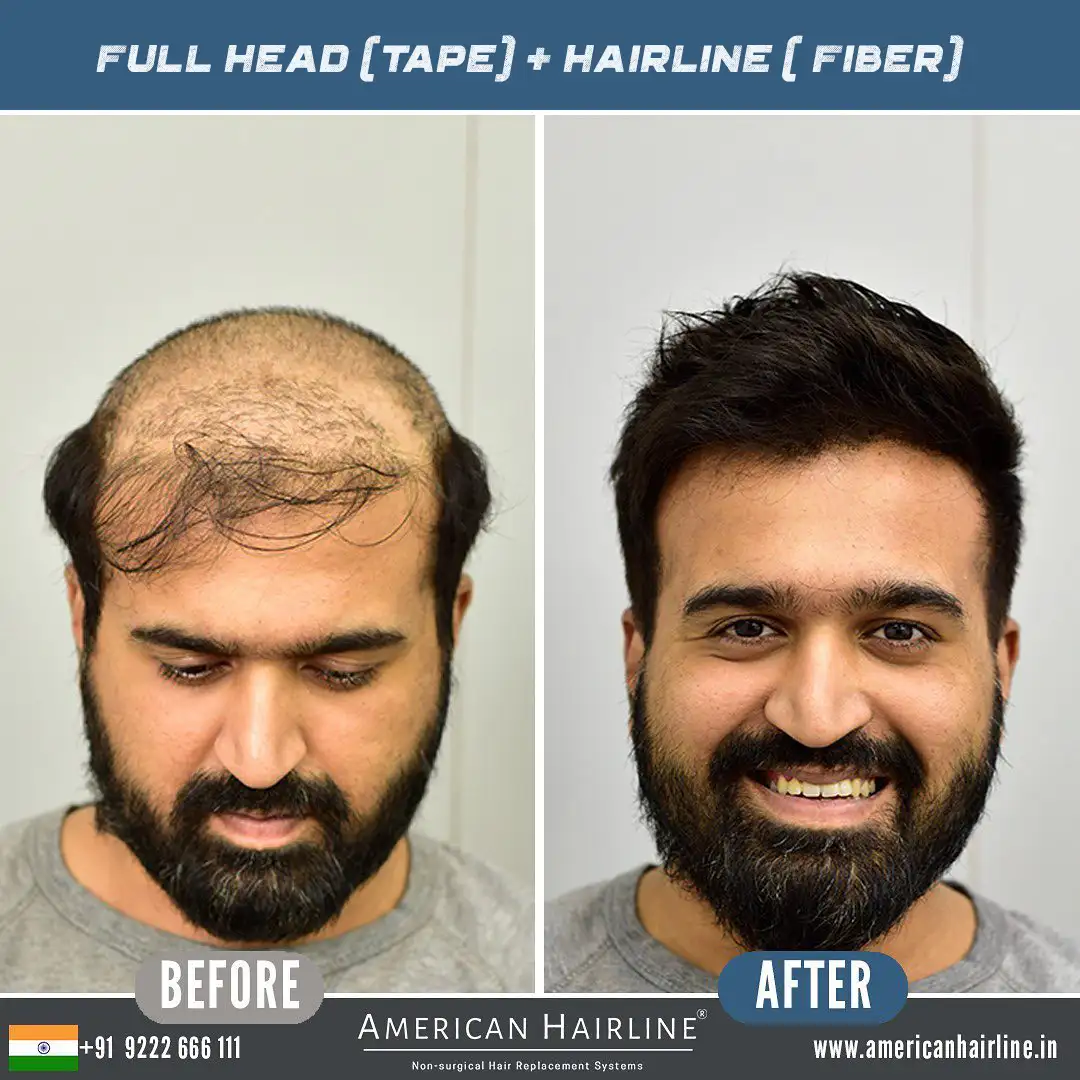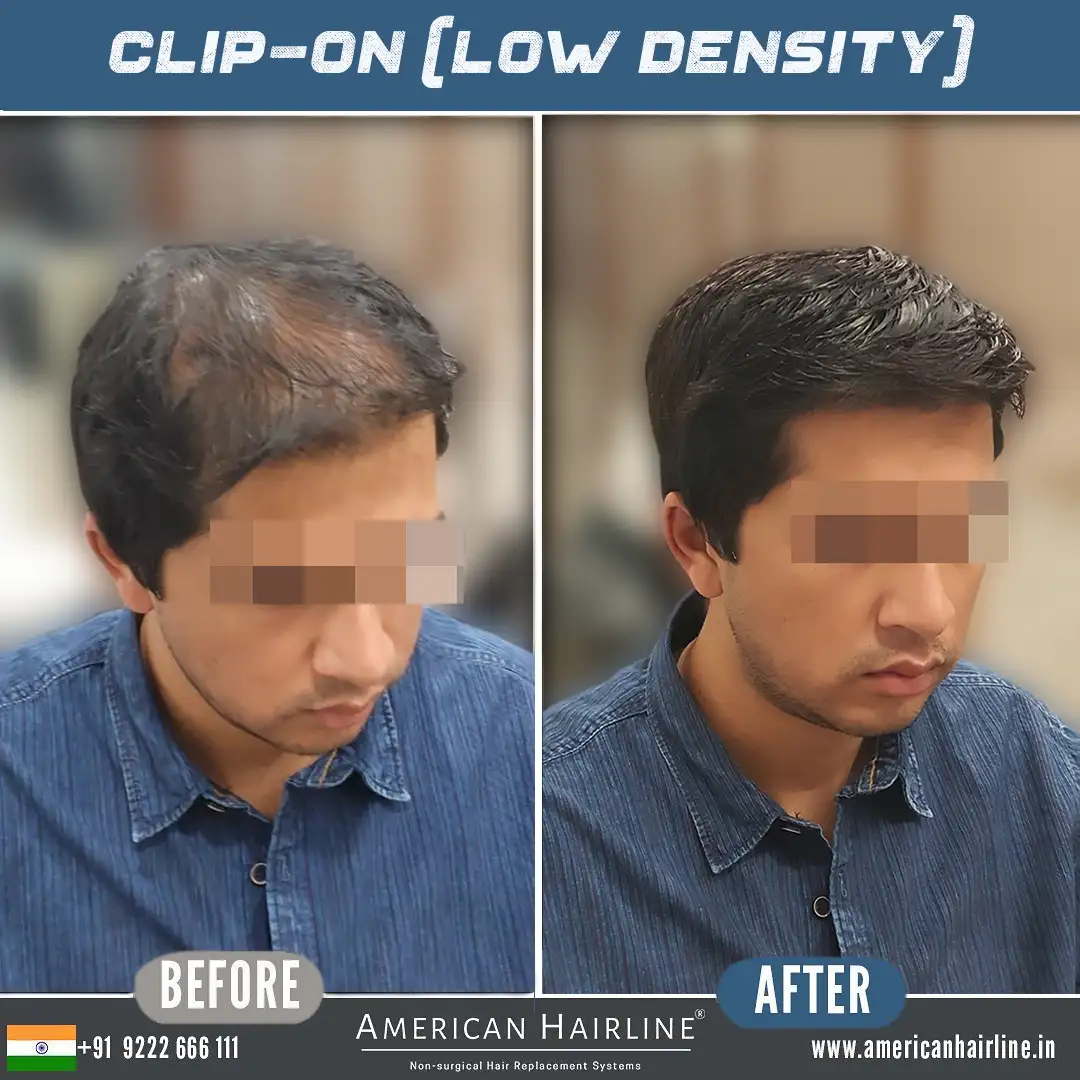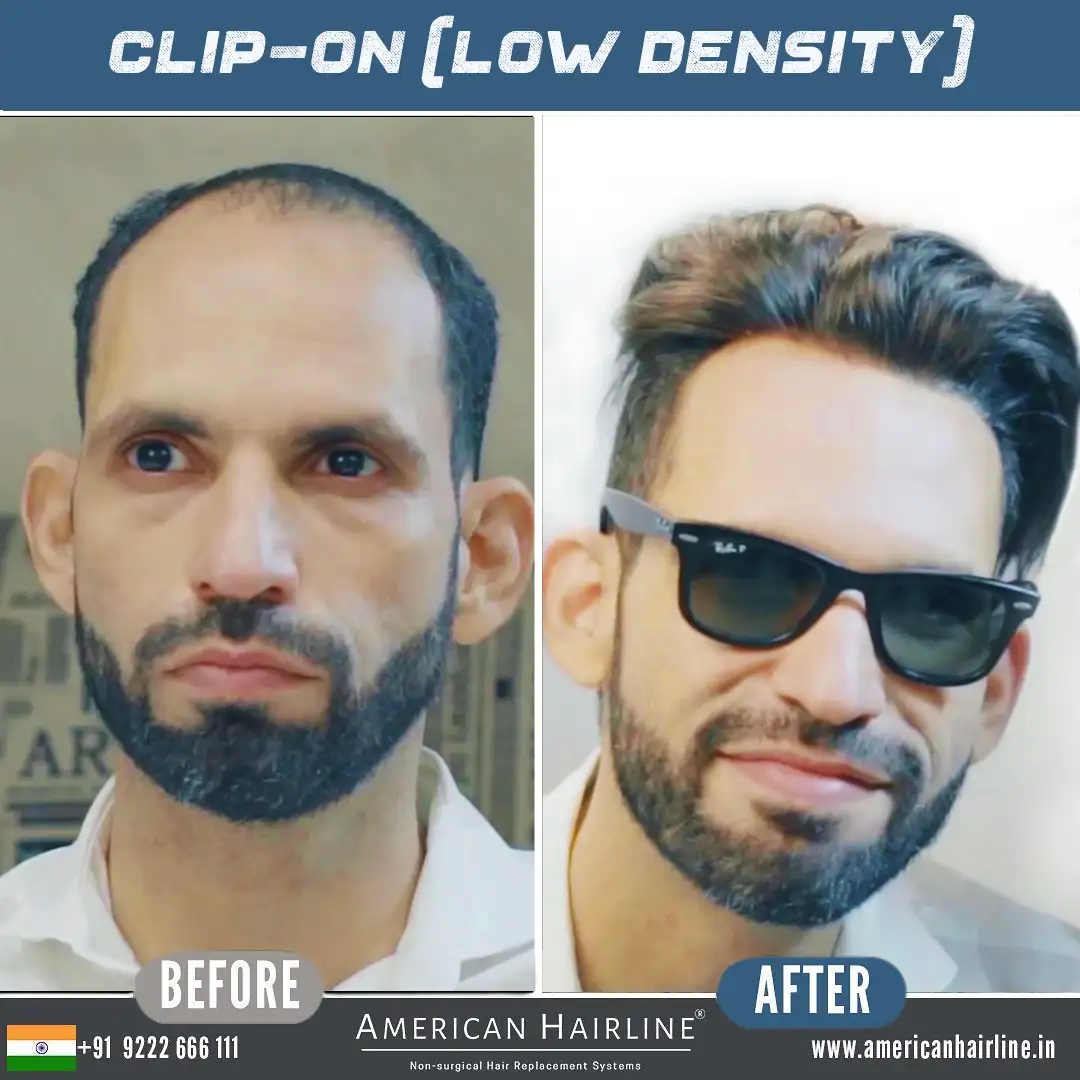Hair loss is often associated with middle-aged men, but today, an increasing number of young men in their early 20s are experiencing thinning hair, receding hairlines, and even bald spots. If you’ve noticed your hairline receding or excessive hair shedding at just 22, you’re not alone.
While genetics play a major role, the modern lifestyle, stress, pollution, and diet have made early balding a growing problem among young men in India. But here’s the good news: You don’t have to accept hair loss as your fate!
With advanced Non Surgical Hair Replacement for men, you can regain a full head of hair instantly—without expensive surgeries or painful treatments.
In this article, we’ll explore:
✔ The science behind early hair loss
✔ The biggest mistakes that make balding worse
✔ The best non surgical hair replacement system that can restore your hairline and confidence instantly.
Table of Content
| Why Are More Young Men Balding at 22? |
| The Biggest Mistakes That Make Hair Loss Worse |
| Best Non-Surgical Solutions to Restore Your Hair Instantly |
| Final Thoughts: Take Control of Your Hair Loss at 22! |
Why Are More Young Men Balding at Twenty-Two?
While male pattern baldness (androgenetic alopecia) is the most common cause of hair loss, it’s no longer just genetics causing early balding. Lifestyle choices, stress, diet, and environmental factors are accelerating hair loss faster than ever before.
- The Role of Genetics in Hair Loss
Yes, genetics play a role, but they’re not the only factor. If your father, grandfather, or uncle experienced early balding, you’re more likely to inherit the condition.
✔ The AR gene on the X chromosome (inherited from your mother) affects DHT sensitivity, leading to follicle shrinkage.
✔ The Norwood Scale classifies male pattern baldness, which typically starts as a receding hairline and crown thinning before leading to bald spots.
However, modern environmental factors have made hair loss worse and more common among young men.
- Stress and Lifestyle Choices Are Speeding Up Hair Loss
Stress is one of the leading causes of early hair thinning, but most men don’t realize it until it’s too late.
✔ Academic & Career Stress – College exams, job pressure, and long work hours spike cortisol levels, which triggers excessive hair shedding.
✔ Sleep Deprivation – Less than 6-7 hours of sleep per night weakens hair follicles and slows down hair growth.
✔ Unhealthy Diets – Junk food, processed snacks, and protein deficiencies weaken hair strands and follicles.
✔ Overuse of Hair Products – Wax, gel, and spray build up on the scalp, blocking follicles and accelerating hair loss.
- Pollution and Hard Water Damage in India
Many young men experience accelerated hair loss due to pollution and hard water exposure in major Indian cities.
✔ Pollution particles clog follicles, cutting off oxygen and nutrients.
✔ Hard water minerals (common in hostels and PGs) create scalp buildup, making hair dry, brittle, and prone to breakage.
✔ Frequent helmet-wearing traps sweat and bacteria, leading to itchy scalp, dandruff, and hair fall.
- Hair Loss from Crash Diets & Gym Supplements
Many young men trying to bulk up or lose weight fast make nutritional mistakes that accelerate hair loss.
✔ Crash diets lead to nutrient deficiencies, causing hair to shed rapidly.
✔ Excess protein supplements (containing creatine or steroids) can increase DHT levels, triggering male pattern baldness.
✔ Sudden weight loss disrupts the hair growth cycle, causing temporary hair thinning (telogen effluvium).
The Biggest Mistakes That Make Hair Loss Worse
If you’re already noticing hair thinning, avoiding common mistakes can slow down further hair loss.
- Ignoring Early Signs of Hair Loss
Many men wait until bald spots appear before taking action. But by then, natural regrowth is impossible.
✔ Early signs: Excessive hair shedding, thinner strands, a widening part, and a receding hairline.
✔ Solution: Start with a Non Surgical Hair Replacement system before hair loss worsens.
- Using Harsh Shampoos & Styling Products
Many shampoos contain sulfates and parabens, which strip natural oils and make hair brittle.
✔ Solution: Switch to a mild, sulfate-free shampoo and avoid using too much wax or gel.
- Delaying Hair Restoration Treatments
Most young men wait too long, assuming hair loss will “fix itself.” But once follicles shrink, hair regrowth is impossible.
✔ Solution: Try Non Surgical Hair Replacement for men, a 100% pain-free, natural-looking solution.
Best Non-Surgical Solutions to Restore Your Hair Instantly
If you’re losing hair at 22, don’t panic! You don’t need a mens hair transplant or risky medications. Instead, Non Surgical Hair Replacement provides a quick, natural-looking solution without pain or long recovery times.
- Hair Patch: The Instant Hair Fix
A hair patch is a custom-made hair system that blends perfectly with your natural hair.
✔ Covers bald spots and thinning areas instantly.
✔ Made from 100% human hair for a completely undetectable finish.
- Stick on Hair System: Secure & Long-Lasting
A Stick on hair system is ideal for long-term wear, staying in place throughout daily activities.
✔ Can withstand workouts, swimming, and daily styling.
✔ Looks and feels like real hair with no daily adjustments needed.
- Clip on Hair System: The Flexible, Removable Option
A Clip on hair system is great for special occasions or temporary volume.
✔ Easy to attach and remove.
✔ Great for styling experiments or last-minute confidence boosts.
- Skin Base Hair System: The Most Natural-Looking Option
A skin base hair system is the most advanced and seamless option available.
✔ Mimics the natural scalp for an ultra-realistic appearance.
✔ Comfortable, breathable, and perfect for all-day wear.
- Combination Method: The Best of Everything
The combination method blends multiple hair systems for a completely customized, natural look.
✔ Best for men with advanced hair loss.
✔ Uses a combination of hair patch, Stick on hair system, and Scalp MicroPigmentation.
Final Thoughts: Take Control of Your Hair Loss at Twenty-Two!
✔ Stop waiting—early action is key!
✔ Book a consultation at American Hairline.
✔ Restore your confidence with Non Surgical Hair Replacement.



